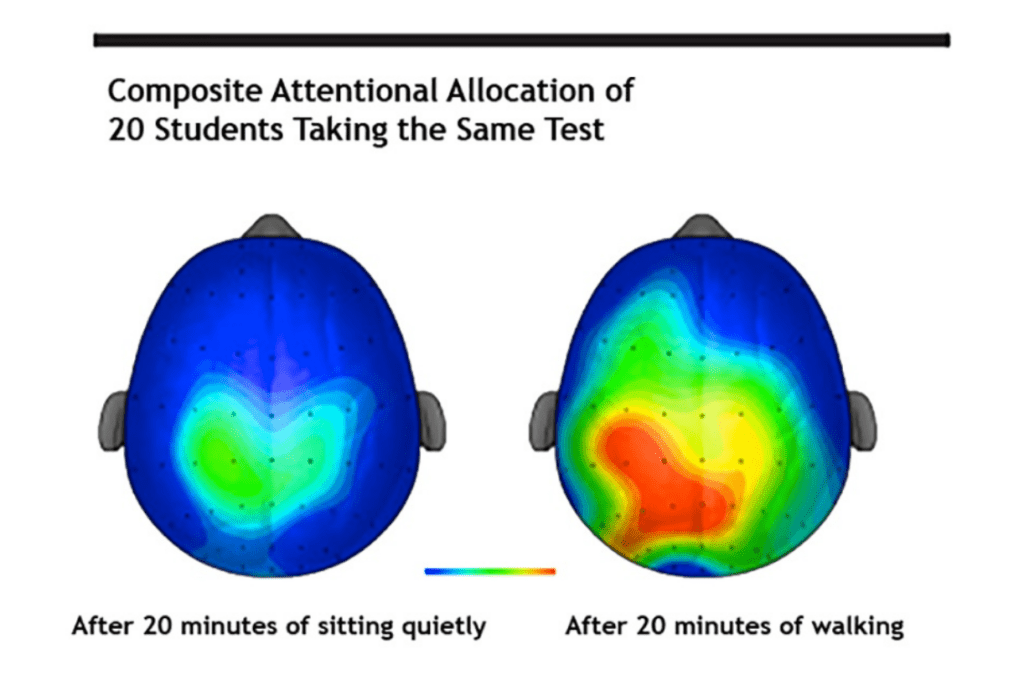
“You have the power to change your brain. All you have to do is lace up your running shoes.”
— John J. Ratey
What if you could increase your ability to learn, boost your mood, and increase your focus by doing something as simple as going for a run or jumping on a trampoline for 15 minutes?
Everyone knows exercise is good for our bodies. But many people aren’t aware that it’s even MORE important for our BRAINS.
In his book Spark: The Revolutionary New Science of Exercise and the Brain, John J. Ratey, MD argues that exercise has such a significant impact on the brain, and we should consider its benefits for our brains first, and bodies second. He describes physical activity as “Miracle Gro(R) for your brain”, providing the stimulation required for our brains to build new neural connections.
Here are some of the biggest takeaways from Spark about the real impact exercise can have on our wellbeing.
What’s going on inside the brain
First, let’s look at a few key elements of the brain.
Parts of our brain:
- The cerebellum, which coordinates motor movements, also coordinates thought, attention, emotion, and social skills.
- The prefrontal cortex organizes mental and physical activity.
- The hippocampus is like a cartographer, cross-referencing received info with memories to form new associations.
Regulator-neurotransmitters:
- Serotonin is the policeman of the brain, keeping brain activity under control. That’s why we use serotonin drugs like fluoxetine/Prozac to treat depression, anxiety, and OCD.
- Norepinephrine amplifies signals regarding attention, perception, motivation, arousal.
- Dopamine is the learning, reward, satisfaction, attention, movement neurotransmitter, but can do different things in different parts of the brain.
Another class of “master molecules” help connections in the brain change and grow. These are called “factors.”
- BDNF: Brain-derived neurotrophic factor is the most prominent. It builds and maintains cell circuitry/infrastructure, nourishing neurons like fertilizer.
That’s a lot of science talk! But here’s why all of this matters: Exercise activates the cerebellum, prefrontal cortex, and hippocampus. It also elevates serotonin, norepinephrine, dopamine, and BDNF.
So, what does lighting up all of these areas of your brain and neurotransmitters do?
Increase your ability to learn

This is a scan showing activity levels in the brains of two students before taking an academic achievement test that measured performance in reading, spelling, and math. The students on the left were in a group that sat quietly for 20 minutes before the test, while the students on the right were in a group that went on a 20-minute walk prior to the test.
Red indicates high activity, while blue indicates lower activity. As you can see, the brain on the right is much more active — which had a direct impact on the students’ performance.
The students who walked for 20 minutes completed the test faster and with greater accuracy than those who sat, and were more likely to read above their grade level.
And this was after just 20 minutes of walking! Intense exercise activates the brain even more.
Exercise helps our brains learn new information more quickly and remember it longer.
This is illustrated in a now-famous study Ratey references in his book about Naperville Central High School in Chicago, Illinois. The gym teachers at Naperville conducted an experiment called “Learning Readiness P.E.” (LRPE), where they scheduled time for students to participate in P.E. before the school day started and used heart rate monitors to ensure that students were engaging in moderate- to high-intensity cardiovascular exercise. Students who participated in Learning Readiness P.E. experienced significantly greater gains in their math and reading performance as compared with students who participated in more traditional P.E. classes.

Improve your mood regulation
Exercise also helps with stress management and mood regulation. Physical activity increases the same neurotransmitters (dopamine and serotonin — you remember them!)) in our brain that antidepressant medications are designed to increase, and can have a tremendously positive impact on people’s state of mind.
In a 1999 study, James Blumenthal showed that exercise was as effective for depression as medication, and found that every 50 minutes of exercise correlated to a 50% reduction in a person’s likelihood of being depressed. In Britain, doctors actually prescribe exercise as a treatment for depression.
Conquer addiction
Odyssey House, a NY rehab program, has an exercise program called “Run For Your Life.”
President and CEO Peter Provet believes that exercise serves as an antidote for against. Exercise is directly oppositional to addiction. It also creates a sense of well being that becomes a craving in its own right.
Addiction creates structural changes in the brain. Exercise can help rewire these parts of the brain. Even 10 min of exercise can stop an addict’s cravings.
When we look at addiction as a neurological malfunction rather than as a moral failure, it suddenly takes on the form of something that can be fixed.
The benefits keep going
Exercise can also help hormonal changes in women, help with ADHD symptoms, and help combat mental declines of aging. (And of course physical declines!)
Check out Ratey’s book if you’d like to learn more.
Ratey recommends engaging in aerobic activities 4-5 days a week for 30 minutes to an hour for optimal benefits.
If you’re ready to get started with an exercise regime but aren’t sure where to start, visit your StarMed primary care physician to talk about the best options based on your current health!
